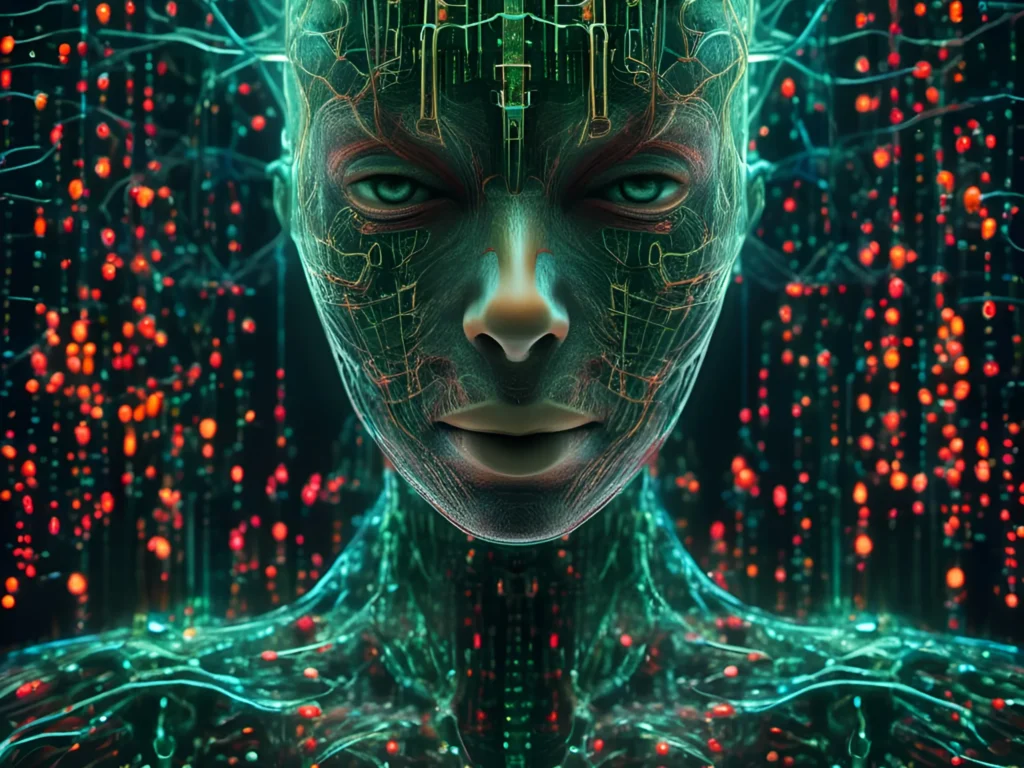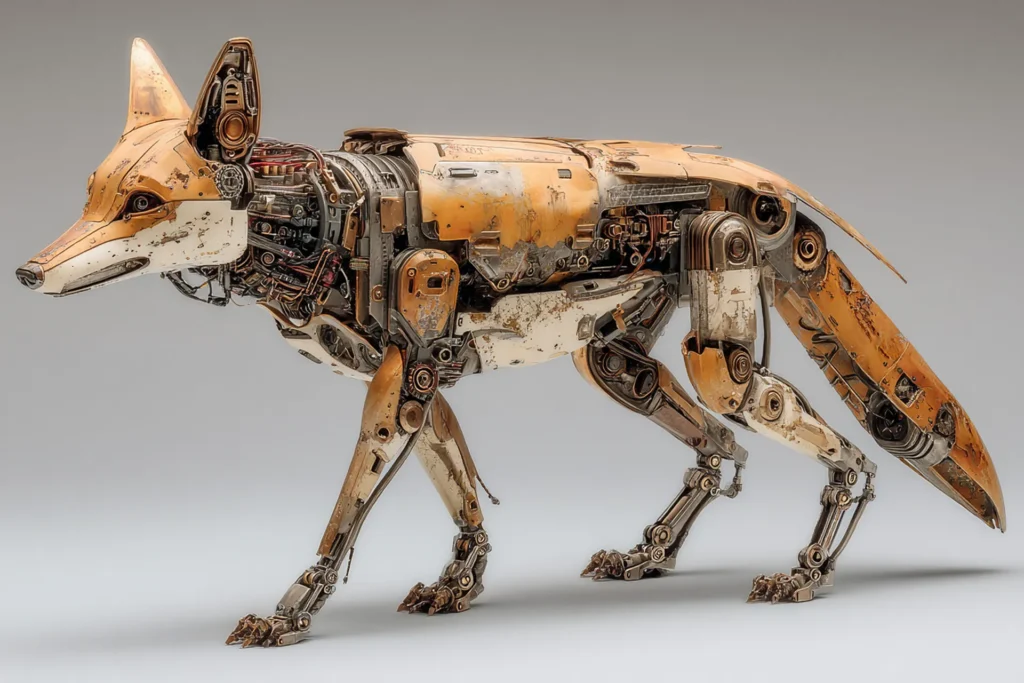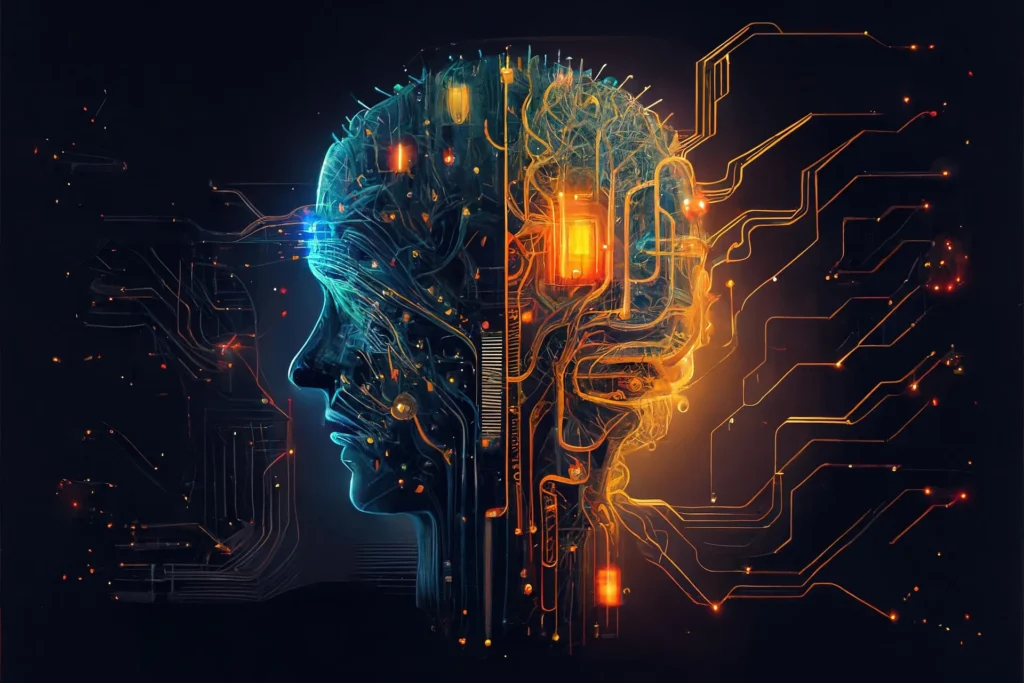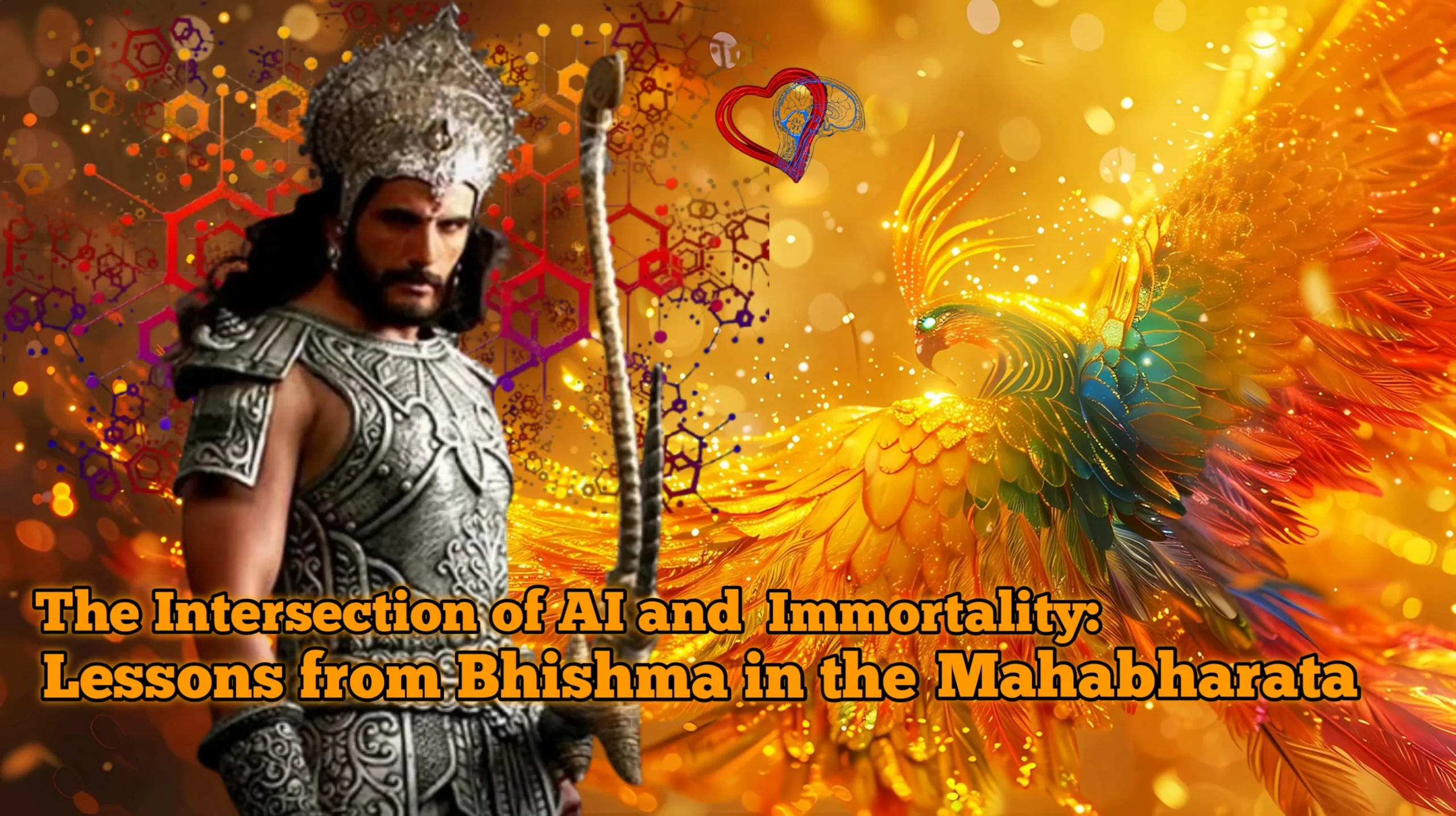A central figure in the Mahabharata story is Dewabhrata, better known as Bhishma, the son of Gangga, who was blessed by the gods through his father, King Santanu. The gift of death will only come according to Bhishma’s own will, and he will be able to choose when his soul leaves his physical body and continues on into eternity.
Welcome to octavianto.com. In this article, we will discuss the development of science and technology, particularly in the field of artificial intelligence, as it relates to the story of the gift bestowed upon Bhishma, the son of Gangga—death occurring only according to human will. Is such a thing possible?

In this era, we are increasingly aware of how our brains work, how they respond to information, and related matters. And of course, for some people, the development of artificial intelligence (AI) is causing anxiety. What if AI eventually achieves consciousness and takes control of humanity? So what, right?! What if humanity could become extinct because of AI? Whether with or without AI, humanity could still become extinct. Don’t get too emotional!
Weren’t humans once non-existent on this planet? If humans were to disappear from this planet one day, it wouldn’t be the end of the world. Right? We must preserve the species?!
Individual intelligence is about how we humans sustain life for as long as possible. But species intelligence is how a species can survive as long as possible on the stage of life. That’s not the result of individual effort, but the collective effort of the species. Currently, there are 8 billion humans living on this planet. Isn’t that, from a biological perspective, the most abundant large-bodied animal on Earth?
Although the number of human species is still outnumbered by insect species, fish, and animals smaller than humans, the animal with the most abundant biomass is humans. The total biomass of humans is only surpassed by the livestock we raise, such as goats, cows, chickens, pigs, and others. Yes, we humans are an ecological success. But what we need to acknowledge and accept as a logical fact is that, sooner or later, humans will inevitably go extinct.
So once again, don’t get too emotional! Even if AI were to trigger human extinction, wouldn’t mass extinction have many triggers? 650 million years ago, the first mass extinction occurred, triggered by cyanobacteria releasing too much oxygen into the atmosphere. The initial oxygen level on Earth was 10%, rising to 21% as it is today. If this mass extinction had not occurred, wouldn’t the human species never have existed on Earth today?
The next mass extinction, the Ordovician-Silurian extinction, occurred 440 million years ago, wiping out 85% of Earth’s species. This mass extinction occurred when organisms like brachiopods and corals filled the shallow waters of our planet. Around 3.7 billion years ago, diverse and widespread life began to emerge. However, most life in the oceans died out due to climate change around 440 million years ago.

The Late Devonian extinction was the third mass extinction, occurring 365 million years ago and causing the extinction of 75% of species. The Devonian period is also known as the “age of fish” in prehistoric times. At this time, many species could not adapt to the decline in oxygen levels and food shortages. According to a study published in a geological journal, some scientists believe that the decline in oxygen levels in the oceans was caused by volcanic eruptions.
The Permian-Triassic extinction was the fourth mass extinction, occurring 253 million years ago. Marine and terrestrial life was largely wiped out due to this mass extinction. Because this mass extinction event killed 90 percent of the species on Earth, including insects, reptiles, and amphibians, it is considered the largest mass extinction ever to occur. Rampant volcanic activity was the cause of this mass extinction. Many volcanoes erupted, releasing significant amounts of carbon dioxide into the atmosphere.
The Sam Noble Museum in Oklahoma states that as a result of changes in weather patterns, sea levels rose and acid rain fell on land. On the other hand, the concentration of dissolved carbon dioxide in water increased, poisoning marine life and eliminating aquatic organisms that required oxygen.
Next, the fifth mass extinction occurred. The Triassic-Jurassic extinction, which took place 201 million years ago, wiped out 80 percent of species. As dinosaurs began to spread across the Earth, the Triassic Period marked the beginning of new and diverse life. Unfortunately, a large number of volcanoes also erupted at that time. Scientists believe that the massive volcanic activity occurring worldwide contributed to this mass extinction, although the exact cause remains unknown.
Volcanoes released large amounts of carbon dioxide, which caused climate change and the destruction of life on Earth as a result of the Permian mass extinction. Many marine and terrestrial species became extinct as ice melted due to rising global temperatures, causing sea levels to rise and become acidic.
In addition, the sixth mass extinction, the Paleogene extinction (K-Pg), is the most well-known. An asteroid over 13 kilometers wide struck Earth at a speed of 45,000 mph (72,000 km/h) 66 million years ago, wiping out 75 percent of species on Earth. After the impact, the asteroid created a crater 12 miles (19 km) deep and 110 miles (180 km) wide, known as the Chicxulub crater. As a result, the asteroid incinerated all land within a 900-mile (1,450 km) radius, ending the 180-million-year reign of dinosaurs on Earth.
Thus, mass extinctions have occurred repeatedly without humans on Earth. Hopefully, the discussion I have written in this article can reduce emotional reactions. Emotional reactions are acceptable, but do not overdo it, as it may lead to self-inflicted suffering.
Let us return to the discussion of AI and humanity. Will AI eliminate humanity? Or will the singularity do so? Or will humans and AI one day merge so that we can no longer distinguish between humans and AI?
Humans need to eat. If they no longer need to eat, then they are no longer human. For example, as a human, I need to eat. I could die if I don’t eat for a certain period of time. If this entity of mine, for instance, is indeed true that the human brain is data and data processing. If my legs were replaced with someone else’s legs, I would still be me. Or if my heart were replaced with someone else’s heart or even a heart made of gold (if possible), my way of speaking, my way of thinking, and everything about my personality would remain the same. Or if my liver is damaged and I undergo treatment in Japan, and it is replaced with a Japanese person’s liver, I would still be me. It would not suddenly make me automatically able to speak Japanese or have other traits related to the owner of the replacement liver. But if my brain is replaced with a cat’s brain, i’ll meow.
All the organs of the human body, including the heart, liver, lungs, and others, work to support the human brain, so that I remain in existence. But even if my body is still here, if my brain dies, I am technically no longer alive. .There are many cases of brain death in hospitals. His heart is still beating, his liver is still healthy, and his blood tests are normal, but he is gone; his brain is dead. He is brain dead.
For example, my brain contains data and data processing. There is a lot of data in it. There is an operating system there, and everyone has a different operating system. There are also hundreds of thousands of overlapping applications. If data and data processing could be mapped exactly and then uploaded, say, into a smartphone, would I still need my heart to exist? No. I would exist within the smartphone. It would only require 3 watts per month. Wait, 3 watts is also calories. I still exist. The question is, am I still human? No. Physically, I have turned into a smartphone. It’s not a problem to turn into a smartphone, but I still exist. Isn’t that unpleasant? Who says it’s unpleasant? Now i ask you. If your little finger is not cut off, you will die. Which would you choose, to have your little finger cut off or to die? Of course you would choose to have your little finger cut off rather than die, right? So that you could still exist.

Now let’s raise the stakes. Your pinky finger and thumb must be cut off so you can stay alive. Which do you choose, to be cut off or to die? How far can I cut before you die? Just cut off anything from our bodies as long as we can stay alive, right? So, we don’t really care about the physical form of humans; what we need and care about is ourselves. It’s okay not to have a complete human form. Earlier, I gave an example of myself being uploaded to a smartphone. I am inside the smartphone. If I had been uploaded to the cloud, where would I be? Yes, I would be everywhere. Wandering around. Like God, right? Transcendent. Everywhere and with the potential for immortality. I won’t die. The question is, where is my human form? I no longer exist in human form. If this can be done and everyone changes form like I did, we will still exist. What ceases to exist is only the human form. This means humanity can still go extinct, but we will still exist. Yes, in another form. It is precisely this singularity that is the point of extinction for humanity. Because humans are all different.
Have you ever heard of or know what the Gilgamesh project is? In the epic of ancient Mesopotamia, the Gilgamesh project was an endeavor to create super soldiers using medicine and technology, with the ultimate goal of achieving immortality. To become transcendent like God or to become God himself. Transcendence means we can be everywhere and don’t need to eat. How is that possible? We feel that this is because our brains are working. So we feel that we exist, we can think, we can have emotions, and so on. Consciousness is also the result of our brain’s algorithms. It’s just that we don’t yet know exactly what the algorithms of consciousness are. So we haven’t been able to create artificial intelligence that is conscious.
Fortunately, geneticist Craig Venter succeeded in creating the world’s first fully synthetic bacterium in 2010. His team at the J. Craig Venter Institute transferred their synthetic genome into a bacterial cell. This synthetic genome was derived from a copy of an existing bacterial genome that had been modified and synthesized in the laboratory.
The genome of the bacterium Mycoplasma mycoides was synthesized unnaturally by Venter’s team. After that, the synthetic genome was inserted into a bacterial cell to replace its original genome. The newly created bacterial cells behaved and replicated according to the instructions of the new synthetic genome.
The creation of these synthetic cells has sparked extensive scientific and ethical discussions, including concerns about their potential impact on the environment and the unethical use of synthetic materials. These synthetic bacteria have significant potential, despite the controversy, such as producing alternative fuels, bioremediation, and vaccines.
Additionally, Venter and his team successfully created the JCVI-syn3.0 bacterial cell, which is extremely small with a very minimal genome containing only the most essential genes for life. Craig Venter created synthetic bacteria, marking a significant advancement in the field of synthetic biology. This enables the growth of new organisms with controllable characteristics that can be utilized for various purposes.
From data uploading, data processing, mapping brain algorithms and operating systems to the cloud, and supported by the initial discovery of dead matter that can be created into living organisms by Craig Venter and his team, imagine if all of that were collaborated! Thus, humans are not merely creatures, but we can also become the Creator/Khaliq (God).
If humans have proven capable of creating bacteria, as demonstrated by Craig Venter and his team, creating other humans is merely a matter of time. So, who creates life (soul)? What is life (soul)?
Disclaimer
The information provided on this website, including but not limited to articles about technology, finance, stock markets, investment, business, self-development, trading, sales & marketing, music, and other related topics, is intended solely for general informational and educational purposes. While every effort is made to ensure the accuracy and reliability of the content, neither the website nor its authors make any warranties or representations regarding the completeness, accuracy, or suitability of the content for any specific purpose.
The contents of this website do not constitute professional, financial, investment, legal, or other expert advice. Readers are advised to consult with suitably qualified professionals regarding specific issues or decisions. Any reliance placed on such information is strictly at your own risk.
Neither the website nor its owners, authors, or affiliates shall be held responsible or liable for any loss or damage—direct or indirect—that may arise from the use of, or reliance on, information provided herein. Past performance in financial markets or business is not indicative of future results. The website may include links to third-party websites for your convenience; however, we do not endorse or take responsibility for the content or accuracy of external sites.
By using this website, you agree to assume full responsibility for any actions taken based on the information presented, and acknowledge that the website expressly disclaims all liability to the maximum extent permitted by law.

